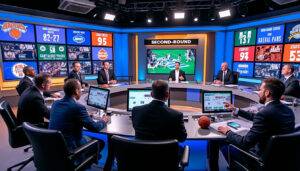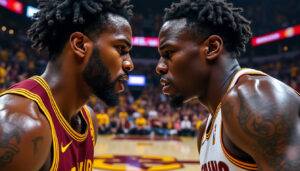NBA reveals the roster of 75 players invited to the 2025 draft combine
The NBA's announcement of the 75 invitees to the 2025 Draft Combine has stirred a blend of excitement and scrutiny. From seasoned college stars to international prospects, the list lays bare the shifting dynamics of basketball talent and the leagues scouting for the next generation.
2025 NBA Draft Combine: A Critical Assessment of the Official Roster
The NBA's declaration that 75 players will take the stage at the Draft Combine in Chicago from May 11-18 sets the tone for intense evaluation. The event, held at the Wintrust Arena and the Marriott Marquis, represents more than a workout—it's a crucible for those eyeing the transition to professional ranks.
- Diverse backgrounds: Prospects hail from college programs such as Duke, Alabama, and Florida, extending to international clubs from Slovenia, Spain, Australia, and more.
- Mandatory participation: According to the Collective Bargaining Agreement, attendance is compulsory for all invited players, underscoring the NBA’s intention to control the pre-draft narrative.
- G League Elite Camp funnel: Standout performers from the May 9-11 G League Elite Camp are slated to receive late invites, highlighting a growing bridge between the NBA and its feeder system.
- Notable invites: Names like Cooper Flagg (Duke), Walter Clayton Jr. (Florida), and Ace Bailey (Rutgers) raise expectations, but the absence of some big names is equally telling of evolving evaluative priorities.
Spotlight on International and College Prospects
The NBA’s player list throws a spotlight on international talent as integral to this draft class. Players such as Izan Almansa from Perth and Vladislav Goldin representing Michigan mix with traditional collegiate standouts, offering a rich blend of playing styles and development paths.
- International Boost: Representation from countries like Australia, Germany, France, and Serbia highlights basketball's global reach. This may increase brand visibility for contracts with Nike, Adidas, and Jordan Brand.
- College Powerhouses: Duke leads with several invitees, including Cooper Flagg, Sion James, and Kon Knueppel, signaling its continued influence on upcoming drafts.
- Position variety: From versatile wings like Eric Dixon (Villanova) to skilled big men like Ryan Kalkbrenner (Creighton), the roster encompasses a variety of prototypical NBA molds.
- Underdog stories: Players from less-heralded programs such as Colorado State’s Nique Clifford and St. Joseph’s Rasheer Fleming offer intriguing dark-horse prospects.
For deeper insight on player progression and draft kinetics, resources such as the NBA Draft Early Entries guide complement these observations with additional context.
How Performance at the Draft Combine Can Make or Break NBA Dreams
Performing before scouts from all 30 NBA franchises, these players have a narrow window to prove their worth. Past experiences show that the Draft Combine is less about raw talent and more about preparedness and the ability to execute under pressure.
- Physical Testing: Advanced measurements of vertical leap, speed, and agility will draw comparisons with prior prospects like Bronny James, whose numbers made waves at the 2024 combine.
- Skill Demonstrations: Shooting drills, playmaking abilities, and defensive footwork provide a storyline that stats alone can't tell.
- Medical Evaluations: Teams scrutinize injury history meticulously, influencing endorsements potential with brands like Under Armour and Puma.
- Media and Personality: Mental makeup and complement to team culture can be deal-breakers, affecting future partnerships with sponsors such as Reebok and New Era.
The Combine's results may shift the draft's landscape dramatically—consult the NBA Draft Lottery Guide and NBA Draft Tiebreakers 2025 to follow how post-combine evaluations affect team strategies.
The Role of Sponsorships and Marketability in Draft Prospects
Beyond pure basketball skill, players look to carve brand partnerships that will anchor their off-court income streams. In 2025, this is as pivotal as on-court prowess.
- Nike and Jordan Brand dominance: Players skilled in style and court presence naturally attract these heavyweight endorsements.
- Emerging alternatives: Adidas, Puma, and Under Armour continue to scout and align with young talents to challenge the traditional market reign.
- Gatorade and Spalding endorsements: Performance and equipment validation remain key in maintaining elite athlete support.
- Regional appeal: International players bring branding opportunities in expanding markets, a factor NBA teams increasingly consider.
The global basketball business landscape influences both player development and draft visibility—follow stories like Zaccharie Risacher and Alexandre Sarr’s draft journey for concrete examples.

